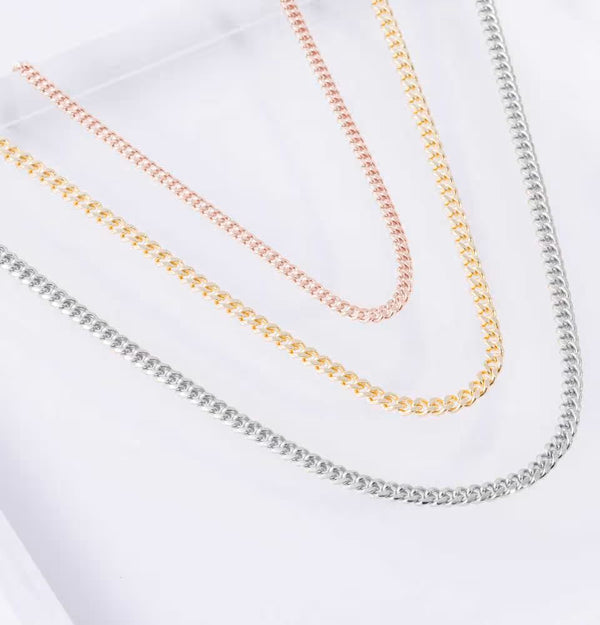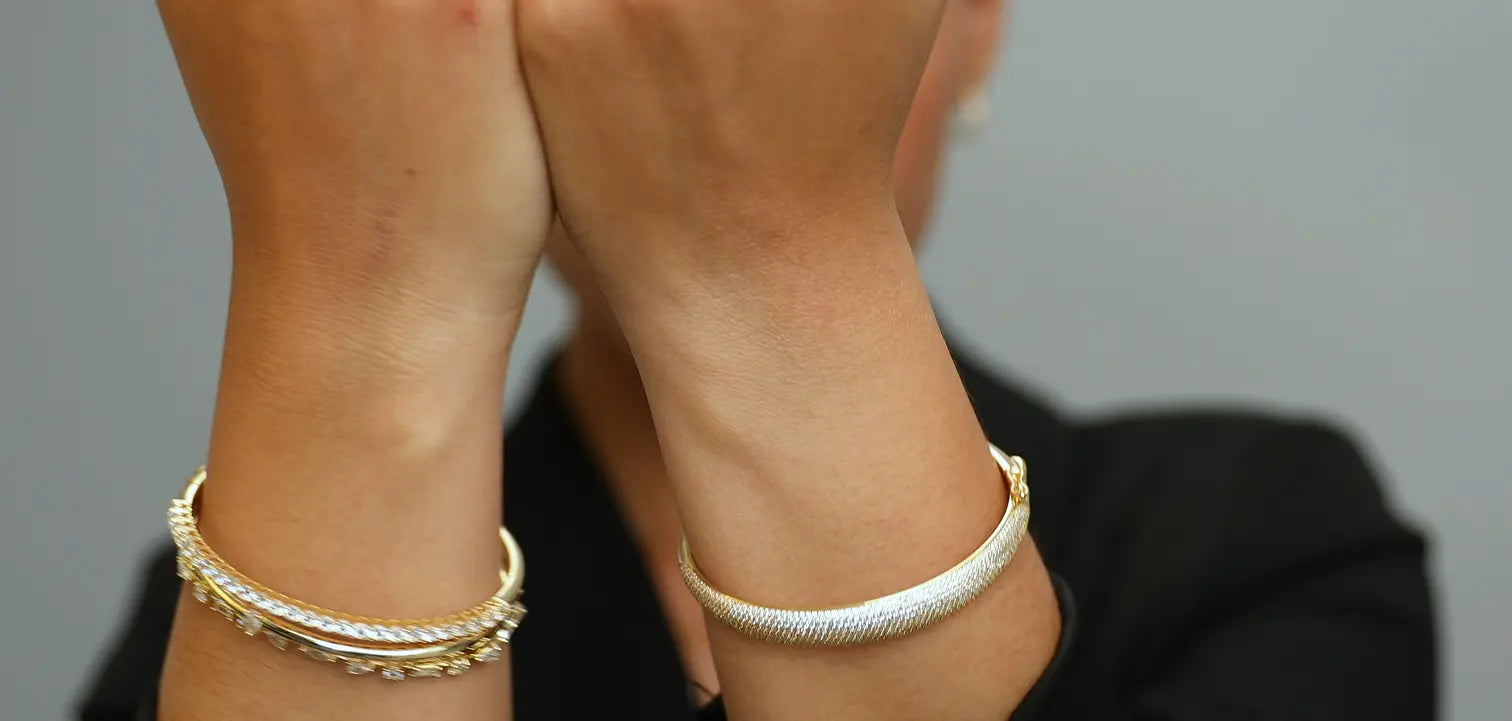Size Guide
Find your perfect fit.
Ring Conversion Size Chart
| Ring Diameter | International Conversion | |
|---|---|---|
| mm | US | EU |
| 1 | 2 | 3 |
| 42.9 | 3 | 44.2 |
| 45.5 | 3.5 | 45.5 |
| 46.8 | 4 | 46.8 |
| 48.0 | 4.5 | 48 |
| 49.3 | 5 | 49.3 |
| 50.6 | 5.5 | 50.6 |
| 51.9 | 6 | 51.9 |
| 53.1 | 6.5 | 53.1 |
| 54.4 | 7 | 54.4 |
| 55.7 | 7.5 | 55.7 |
| 57.0 | 8 | 3 |
| Ring Diameter | International Conversion | |
|---|---|---|
| mm | US | EU |
| 1 | 2 | 3 |
| 58.3 | 8.5 | 58.3 |
| 59.5 | 9 | 59.5 |
| 60.8 | 9.5 | 60.8 |
| 62.1 | 10 | 62.1 |
| 63.4 | 10.5 | 63.4 |
| 64.6 | 11 | 64.6 |
| 65.9 | 11.5 | 65.9 |
| 67.2 | 12 | 67.2 |
| 68.5 | 12.5 | 68.5 |
| 69.7 | 13 | 69.7 |
Bracelet Size Chart
| Bracelets | Wrist Measurement | |
|---|---|---|
| mm | US | EU |
| 1 | 2 | 3 |
| X-Small | 4.76-5.25 | 121-133 |
| Small | 5.26-5.75 | 134-146 |
| Medium | 5.76-6.25 | 146-159 |
| Large | 6.26-6.75 | 159-171 |
| X-Large | 6.76-7.25 | 172-184 |
| XX-Large | 7.26-7.75 | 197-210 |
Gold Guide
The most malleable of all precious metals, gold is ideal for crafting designs that last a lifetime.
Gold Alloys
Karat
Buying Tips
Gold Alloys
Gold Alloys

Karat
Buying Tips
Diamond Guide
Here's everything you need to know about the most precious and beautiful creations in the world.
Quality Factors
Not all diamonds are created equal. Here are the 4 key factors, also known as the 4Cs, used to describe and classify diamonds:
Color, Clarity, Cut, and Carat Weight.
Lab-Grown vs Natural
Buying Tips
- Choosing a selection results in a full page refresh.











